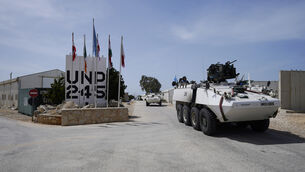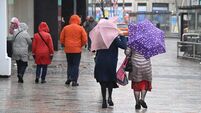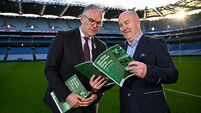Junior Cert Science meets with favourable reaction
For students at both levels, up to 35% of the marks had already been completed in course work and investigations.
Mattie Finnerty of the ASTI said the higher level paper reflected the emphasis of the syllabus on practical work in the labs and anybody who had this work done would have been well rewarded. But there were some demanding parts, particularly in the chemistry questions where two parts required students to write chemical equations.
Mr Finnerty said the ordinary level paper was relatively easy and student-friendly.
But the TUI’s Gerry King disagreed and said there were difficult questions in physics, for example, asking to identify a femur and about a difficult experiment on enzymes and, in chemistry, about chemical bonding. He felt the phrasing of some questions was harder than those on similar topics at higher level.
Mr King agreed that the emphasis of the higher level paper on experiments was in line with the approach of the new syllabus and it was a hard but fair paper. He felt the chemistry questions were more student-friendly than in other years.
However, teachers and students are still not happy that the revised exam format gives no choice between or within questions.
The afternoon’s Leaving Certificate art history and appreciation were worth 37% but will have a big impact on the final grades.
Helen Comiskey of the TUI said the higher level paper was fair but many of the questions were demanding as they included a lot of parts.
A question on a Georgian Irish house was unusual as it concentrated on the interior but many students would have been happy that a question on Philip Treacy came up.
Ms Comiskey said the ordinary level paper was straightforward with well laid-out questions and topics like Jack B Yeats, the Children of Lir, Caravaggio’s The Taking of Christ should have been popular with most students.
Leaving Certificate technical drawing candidates had their first papers yesterday morning, with the second papers to be taken this afternoon.
Pat O’Dwyer of the TUI said both higher and ordinary level papers were tough but fair and the layout was in keeping with other years. Students who don’t like solid geometry would have been pleased to see three plane geometry questions on each paper.
At ordinary level, he said, the problems to be solved in each question were spelt out very clearly.
The higher level paper required students to be more careful in determining the problem within each question. Otherwise, however, Mr O’Dwyer felt it was a good test of students’ abilities.
The ASTI’s John O’Sullivan said higher level paper I was in line with other years. He had favourable comments for question 5 on special curves, particularly a part on the logarithmic spiral.
However, the question on inter-penetration was challenging and time consuming. Overall, he said the paper was fair with enough choice for most students.
Mr O’Sullivan said the ordinary level paper was also fair, and the question on solids in contact was well structured. However, part of question four in which a circle pivots before it rolls was over-demanding for most students.
Overall, he said, the paper gave students a good chance to display their knowledge and understanding of the course.
TUI spokesperson Una Killoran said the ordinary level Junior Certificate religious education paper was acceptable, with the first two sections okay, apart from the difficult last question of section 2. She also felt a map from which students had to identify the city of Jerusalem might have been tough.
The same map was the subject of questions on the higher level paper, which Ms Killoran said was a different matter entirely to the ordinary level exam. Although the first three sections were answerable, she felt there were many tough questions in section 4.
David Martin of the ASTI felt there was nothing major to catch students out on either paper, although he said the illustrations and pictures were small and difficult to make out, just like in other years. He said they followed the same format of the last two years and students felt they were very reasonable.












